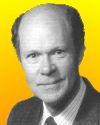
Born 10 Jan 1936. quotes
American radio astronomer who shared, with his coworker Arno Penzias, the 1978 Nobel Prize for Physics for their discovery of cosmic microwave background radiation using a microwave horn antenna at Bell Laboratories, Holmdel, New Jersey. Their discovery in 1964 is now widely interpreted as being the remnant radiation from the “Big Bang” model for the creation of the universe several billion years ago. Wilson is continuing his astrophysics work with Penzias, looking for interstellar molecules and determining the relative abundances of interstellar isotopes. (Soviet physicist Pyotr Leonidovich Kapitsa also shared the Nobel award, for unrelated research.)
American radio astronomer who shared, with his coworker Arno Penzias, the 1978 Nobel Prize for Physics for their discovery of cosmic microwave background radiation using a microwave horn antenna at Bell Laboratories, Holmdel, New Jersey. Their discovery in 1964 is now widely interpreted as being the remnant radiation from the “Big Bang” model for the creation of the universe several billion years ago. Wilson is continuing his astrophysics work with Penzias, looking for interstellar molecules and determining the relative abundances of interstellar isotopes. (Soviet physicist Pyotr Leonidovich Kapitsa also shared the Nobel award, for unrelated research.)
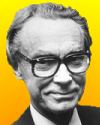
Born 10 Jan 1916; died 15 Aug 2004 at age 88. quotes
Swedish biochemist who shared the 1982 Nobel Prize for Physiology or Medicine, (with Bengt Ingemar Samuelsson and John Robert Vane) for the isolation, identification, and analysis of prostaglandins and related biologically active substances. (These biochemical compounds influence such physiological phenomena in mammals as blood pressure, body temperature and allergic reactions.) Bergström purified several prostaglandins and determined their chemical structure. He also showed that prostaglandins are formed from unsaturated fatty acids. Through this discovery the metabolism of unsaturated fatty acids became of major interest in future research.
Swedish biochemist who shared the 1982 Nobel Prize for Physiology or Medicine, (with Bengt Ingemar Samuelsson and John Robert Vane) for the isolation, identification, and analysis of prostaglandins and related biologically active substances. (These biochemical compounds influence such physiological phenomena in mammals as blood pressure, body temperature and allergic reactions.) Bergström purified several prostaglandins and determined their chemical structure. He also showed that prostaglandins are formed from unsaturated fatty acids. Through this discovery the metabolism of unsaturated fatty acids became of major interest in future research.
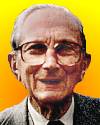
Born 10 Jan 1911; died 5 Jan 2004 at age 92.
English biochemist who solved problems in the extraction of penicillin from its mould, and paved the way for mass production. By D-Day of WW II, the Allies had an adequate stock to treat the wounded in danger of serious bacterial infections. Although it was Fleming who accidentally discovered penicillin (1928), it was Heatley who made it practical, making sufficient quantity by 1941 for its first clinical tests. His apparatus included porcelain "bedpans", milk churns and roasting trays to grow the bacteria. Also, an assay method he developed could precisely measure the activity of a sample of penicillin, in what became known as “Oxford units”. His production method used pie plates, cookie tins, and a porcelain vessel dubbed the bedpan.
English biochemist who solved problems in the extraction of penicillin from its mould, and paved the way for mass production. By D-Day of WW II, the Allies had an adequate stock to treat the wounded in danger of serious bacterial infections. Although it was Fleming who accidentally discovered penicillin (1928), it was Heatley who made it practical, making sufficient quantity by 1941 for its first clinical tests. His apparatus included porcelain "bedpans", milk churns and roasting trays to grow the bacteria. Also, an assay method he developed could precisely measure the activity of a sample of penicillin, in what became known as “Oxford units”. His production method used pie plates, cookie tins, and a porcelain vessel dubbed the bedpan.
The Mold in Dr. Florey's Coat: The Story of the Penicillin Miracle, by Eric Lax. - book suggestion.
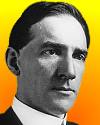
Born 10 Jan 1877; died 16 Nov 1948 at age 71.
American educator and scientist who invented the industrial electrostatic precipitator (1907), which eliminates suspended particles from streams of gases. He patented the “Art of Separating Suspended Particles from Gaseous Bodies” (No. 895,729). To electrochemists, he is best known for the Cottrell equation. Electrostatic precipitators are still widely used to reduce air pollution by smoke from power plants and dust from cement kilns and other industrial sources. Cottrell contributed to the development of a process for the separation of helium from natural gas, and also was instrumental in establishing the synthetic ammonia industry in the U.S. during attempts to perfect a high temperature process for formation of nitric oxide.
American educator and scientist who invented the industrial electrostatic precipitator (1907), which eliminates suspended particles from streams of gases. He patented the “Art of Separating Suspended Particles from Gaseous Bodies” (No. 895,729). To electrochemists, he is best known for the Cottrell equation. Electrostatic precipitators are still widely used to reduce air pollution by smoke from power plants and dust from cement kilns and other industrial sources. Cottrell contributed to the development of a process for the separation of helium from natural gas, and also was instrumental in establishing the synthetic ammonia industry in the U.S. during attempts to perfect a high temperature process for formation of nitric oxide.
Cottrell, Samaritan of Science, by Frank Cameron. - book suggestion.
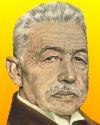
Born 10 Jan 1866; died 24 Jun 1942 at age 76.
Karl Albert Ludwig Aschoff was a German pathologist who named the reticuloendothelial system (1924) comprising those cells found in various tissues that are phagocytic (capable of engulfing bacteria and other substances). He also made important studies on appendicitis, gallstones, jaundice, scurvy, and thrombosis. In 1904 in an article on myocarditis associated with acute rheumatic fever he presented his classic description of the inflammatory nodules (called Aschoff's bodies, or nodules) that are characteristic of this rheumatic process. One of the foremost pathologists of his time, Aschoff undertook noteworthy investigations into cholelithiasis, thrombosis, scurvy, and appendicitis.
Karl Albert Ludwig Aschoff was a German pathologist who named the reticuloendothelial system (1924) comprising those cells found in various tissues that are phagocytic (capable of engulfing bacteria and other substances). He also made important studies on appendicitis, gallstones, jaundice, scurvy, and thrombosis. In 1904 in an article on myocarditis associated with acute rheumatic fever he presented his classic description of the inflammatory nodules (called Aschoff's bodies, or nodules) that are characteristic of this rheumatic process. One of the foremost pathologists of his time, Aschoff undertook noteworthy investigations into cholelithiasis, thrombosis, scurvy, and appendicitis.
Born 10 Jan 1853; died 17 Sep 1924 at age 71.
German-American astronomer.
German-American astronomer.
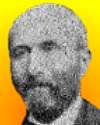
Born 10 Jan 1829; died 7 Feb 1917 at age 88.
French hydraulic engineer who assisted the research of H.-P.-G. Darcy (1803-58) and reported in Recherches hydrauliques (1865) their results of open channel flow experiments, which he continued and completed after Darcy's death. He also studied wave propagation and fluid flow through orifices. In 1854, he improved the Canal de Bourgogne, important for French inland commercial navigation, and made it profitable. Bazin's additions to the canal included sluice enlargement, tunnel improvement, and water supply from an enhanced reservoir. In 1867, his suggestion to use pumps for dredging rivers led to the construction of the first suction dredgers. In 1886, he was appointed Inspecteur General of the Ponts et Chausses Corps.«
French hydraulic engineer who assisted the research of H.-P.-G. Darcy (1803-58) and reported in Recherches hydrauliques (1865) their results of open channel flow experiments, which he continued and completed after Darcy's death. He also studied wave propagation and fluid flow through orifices. In 1854, he improved the Canal de Bourgogne, important for French inland commercial navigation, and made it profitable. Bazin's additions to the canal included sluice enlargement, tunnel improvement, and water supply from an enhanced reservoir. In 1867, his suggestion to use pumps for dredging rivers led to the construction of the first suction dredgers. In 1886, he was appointed Inspecteur General of the Ponts et Chausses Corps.«
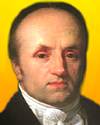
Born 10 Jan 1747; died 17 Sep 1823 at age 76.
Swiss-French horologist and inventor who became the leading French watchmaker of his time because of his artistic as well as technical skill. His innovations included a self-winding or "perpétuelle" watch (1780), the gong spring which decreased the size of repeater watches, and the first anti-shock device or "pare-chute", which improved the reliability of his watches while making them less fragile. In 1775 he founded the Breguet watchmaking firm. After a two year interruption during the French Revolution, he continued business with more inventions. He sold the first modern carriage clock to Bonaparte, and created the tact watch by which time could be read by touch.«
Swiss-French horologist and inventor who became the leading French watchmaker of his time because of his artistic as well as technical skill. His innovations included a self-winding or "perpétuelle" watch (1780), the gong spring which decreased the size of repeater watches, and the first anti-shock device or "pare-chute", which improved the reliability of his watches while making them less fragile. In 1775 he founded the Breguet watchmaking firm. After a two year interruption during the French Revolution, he continued business with more inventions. He sold the first modern carriage clock to Bonaparte, and created the tact watch by which time could be read by touch.«
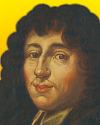
Born 10 Jan 1638; died 25 Nov 1686 at age 48. quotes
(a.k.a. Niels Steensen, or Stensen), who first and made unprecedented discoveries in anatomy, then established some of the most important principles of modern geology. During medical studies in Amsterdam he discovered “Stensen's duct” providing saliva from the parotid gland to the mouth. He was Danish royal anatomist for 2 years. Interested by the characteristics and origins of minerals, rocks, and fossils, he published in Prodromus (1669) the law of superposition (if a series of sedimentary rocks has not been overturned, upper layers are younger and lower layers are older) and the law of original horizontality (although strata may be found dipping steeply, they were initially deposited nearly horizontal.)[DSB gives date of death 25 Nov/5 Dec 1686 (O.S./N.S.). EB gives 26 Nov 1686.]
(a.k.a. Niels Steensen, or Stensen), who first and made unprecedented discoveries in anatomy, then established some of the most important principles of modern geology. During medical studies in Amsterdam he discovered “Stensen's duct” providing saliva from the parotid gland to the mouth. He was Danish royal anatomist for 2 years. Interested by the characteristics and origins of minerals, rocks, and fossils, he published in Prodromus (1669) the law of superposition (if a series of sedimentary rocks has not been overturned, upper layers are younger and lower layers are older) and the law of original horizontality (although strata may be found dipping steeply, they were initially deposited nearly horizontal.)[DSB gives date of death 25 Nov/5 Dec 1686 (O.S./N.S.). EB gives 26 Nov 1686.]
The Seashell on the Mountaintop, by Alan Cutler. - book suggestion.
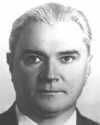
Died 10 Jan 1989 at age 80 (born 20 Aug 1908).
Soviet rocket scientist who was a pioneer developer of rocket engines (1946-74). From 1929, he worked in Leningrad in GDL - the Gas Dynamics Laboratory, the military rocket research organization, founded in 1921. He worked with renowned rocket designer Sergey Korolyov (1932-1966). In Aug 1957, they successfully launched the first intercontinental ballistic missile and in October of the same year, sent the first artificial satellite, Sputnik I, into orbit. He became chief designer for the Soviet space program in 1974, helping to oversee development of the Mir space station. During his life, he designed the most succesessful rocket engines in the Soviet space program.
Soviet rocket scientist who was a pioneer developer of rocket engines (1946-74). From 1929, he worked in Leningrad in GDL - the Gas Dynamics Laboratory, the military rocket research organization, founded in 1921. He worked with renowned rocket designer Sergey Korolyov (1932-1966). In Aug 1957, they successfully launched the first intercontinental ballistic missile and in October of the same year, sent the first artificial satellite, Sputnik I, into orbit. He became chief designer for the Soviet space program in 1974, helping to oversee development of the Mir space station. During his life, he designed the most succesessful rocket engines in the Soviet space program.
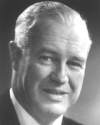
Died 10 Jan 1977 at age 69 (born 2 Oct 1907). quotes
Baron Alexander R(obertus) Todd (of Trumpington) was a British biochemist whose research on the structure and synthesis of nucleotides, nucleosides, and nucleotide coenzymes gained him the 1957 Nobel Prize for Chemistry. Nucleotides - found in the chromosomes of the cell-kernels, also in cell plasma - are connected with the units of heredity. In combination with proteins they constitute the virus molecules and many coenzymes are nucleotides of low molecular weight but with a special structure. It was known that they are built up of three quite different "building stones": phosphoric acid, a sugar, and a heterocyclic base containing nitrogen, assembled in one macromolecule. Todd researched how they are connected to each other.
Baron Alexander R(obertus) Todd (of Trumpington) was a British biochemist whose research on the structure and synthesis of nucleotides, nucleosides, and nucleotide coenzymes gained him the 1957 Nobel Prize for Chemistry. Nucleotides - found in the chromosomes of the cell-kernels, also in cell plasma - are connected with the units of heredity. In combination with proteins they constitute the virus molecules and many coenzymes are nucleotides of low molecular weight but with a special structure. It was known that they are built up of three quite different "building stones": phosphoric acid, a sugar, and a heterocyclic base containing nitrogen, assembled in one macromolecule. Todd researched how they are connected to each other.
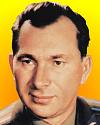
Died 10 Jan 1970 at age 44 (born 26 Jun 1925).
Russian cosmonaut who was pilot of the historic Voskhod 2 space mission, launched on 18 Mar 1965. While the flight was in orbit, the co-pilot. Aleksey Leonov, became the first man to walk in space. The flight only lasted a day due to a failure of the automatic guidance system. Belyayev was selected for the space programme in 1960 he had nearly 15 years experience as a military pilot. He was originally scheduled to fly on the Vostok 8 mission into the Earth's van Allen radiation belt, but this was cancelled. When Belyayev died after a long stomach illness, periotonitis that resulted from an operation on a stomach ulcer, he became the first spaceman to die of natural causes.
Russian cosmonaut who was pilot of the historic Voskhod 2 space mission, launched on 18 Mar 1965. While the flight was in orbit, the co-pilot. Aleksey Leonov, became the first man to walk in space. The flight only lasted a day due to a failure of the automatic guidance system. Belyayev was selected for the space programme in 1960 he had nearly 15 years experience as a military pilot. He was originally scheduled to fly on the Vostok 8 mission into the Earth's van Allen radiation belt, but this was cancelled. When Belyayev died after a long stomach illness, periotonitis that resulted from an operation on a stomach ulcer, he became the first spaceman to die of natural causes.
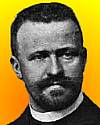
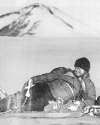
German geographer and glaciologist who discovered a volcano, free of ice, on the Antarctic continent. He named it Gaussberg, after the name of his research ship Gauss in which he led the German South Polar Expedition (1901-03). The ship became trapped in frozen seas and the team spent almost a year (21 Feb 1902 to 8 Feb 1903) making sledge expeditions from the immobile ship, including geological and magnetic surveys. The volcano was 50 miles west of this location. He also ascended to an altitude of 1600-ft in a balloon that was part of the equipment carried on the voyage. There were 32 men in all—5 scientists, 5 naval officers and 22 regular crew. Upon his return, he published scientific reports in a series of 20 volumes. In 1910, he took part in Count Zeppelin's expedition to Spitsbergen.«[Image right: Drygalski with the volcano Gaussberg in the background.] more
The German South Polar Expedition, 1901-3, by Erich Von Drygalski. - book suggestion.
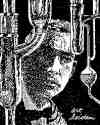
Died 10 Jan 1937 at age 69 (born 26 May 1867).
U.S. chemist who interpreted the behaviour and structure of organic compounds in the light of valence theory and applied the methods of physical chemistry to organic chemistry. His research in such fields as molecular rearrangements and stereochemistry helped lay the foundations of physicoorganic chemistry. During World War I, he advised the government on how to overcome shortages of chemicals which had come from Germany. He was very active in World War I developing war gases, dyes, and chemicals for the American military forces. He served as chairman of the committee on synthetic drugs of the National Research Council.
U.S. chemist who interpreted the behaviour and structure of organic compounds in the light of valence theory and applied the methods of physical chemistry to organic chemistry. His research in such fields as molecular rearrangements and stereochemistry helped lay the foundations of physicoorganic chemistry. During World War I, he advised the government on how to overcome shortages of chemicals which had come from Germany. He was very active in World War I developing war gases, dyes, and chemicals for the American military forces. He served as chairman of the committee on synthetic drugs of the National Research Council.
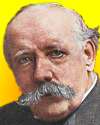
Died 10 Jan 1919 at age 72 (born 17 Oct 1846). quotes
William Deane Butcher was an English surgeon who was one of the distinguished pioneers in England working on the application of X-rays for diagnosis and therapy. Three years after the discovery of X-rays, he was appointed to the staff of the London Skin Hospital (1898) and became Surgeon in Charge of the Electrical Department. Deane Butcher served terms as President of the Röntgen Society (1908), and of the Section of Electrotherapies of the Royal Society of Medicine (1909). He was also active with the British Homoeopathic Society. His book translations include works on the use of electricity in medicine and radiotherapy of skin diseases. From 1905 to 1914, he was an editor of a general radiology journal, Archives of the Roentgen Ray.«
William Deane Butcher was an English surgeon who was one of the distinguished pioneers in England working on the application of X-rays for diagnosis and therapy. Three years after the discovery of X-rays, he was appointed to the staff of the London Skin Hospital (1898) and became Surgeon in Charge of the Electrical Department. Deane Butcher served terms as President of the Röntgen Society (1908), and of the Section of Electrotherapies of the Royal Society of Medicine (1909). He was also active with the British Homoeopathic Society. His book translations include works on the use of electricity in medicine and radiotherapy of skin diseases. From 1905 to 1914, he was an editor of a general radiology journal, Archives of the Roentgen Ray.«
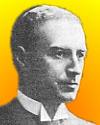
Died 10 Jan 1919 at age 50 (born 13 Jun 1868).
Wallace Clement Ware Sabine was an American physicist who founded the science of architectural acoustics. After experimenting in the Fogg lecture room at Harvard, to investigate the effect of absorption on the reverberation time, on 29 Oct 1898 he discovered the type of relation between these quantities. The duration T of the residual sound to decay below the audible intensity, starting from a 1,000,000 times higher initial intensity is given by: T = 0.161 V/A (V=room volume in m³, A=total absorption in m². The first auditorium Sabine designed applying his new insight in acoustics, was the new Boston Music Hall, formally opened on 15 Oct 1900. Now known as the Symphony Hall, and still considered one of the world's three finest concert halls.
Wallace Clement Ware Sabine was an American physicist who founded the science of architectural acoustics. After experimenting in the Fogg lecture room at Harvard, to investigate the effect of absorption on the reverberation time, on 29 Oct 1898 he discovered the type of relation between these quantities. The duration T of the residual sound to decay below the audible intensity, starting from a 1,000,000 times higher initial intensity is given by: T = 0.161 V/A (V=room volume in m³, A=total absorption in m². The first auditorium Sabine designed applying his new insight in acoustics, was the new Boston Music Hall, formally opened on 15 Oct 1900. Now known as the Symphony Hall, and still considered one of the world's three finest concert halls.
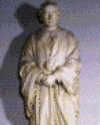
Statue of Stokes
Died 10 Jan 1878 at age 73 (born 1 Oct 1804).
Physician who was the leading representative of the Irish, or Dublin, school of anatomical diagnosis, which emphasized clinical examination of patients in forming a diagnosis. With colleague, John Cheyne, he described Cheyne-Stokes respiration associated with terminal illness; and with Robert Adams described Stokes-Adams attacks, an abnormality of the heart. Stokes is regarded as one of the founders of modern cardiology. In 1838, he co-founded the Dublin Pathological Society, the first society of its kind in the Western world. Every Saturday the member physicians and surgeons met to share knowledge about clinical cases. He was also the author of two important works in the emerging field of cardiac and pulmonary diseases.Statue of Stokes
Physician who was the leading representative of the Irish, or Dublin, school of anatomical diagnosis, which emphasized clinical examination of patients in forming a diagnosis. With colleague, John Cheyne, he described Cheyne-Stokes respiration associated with terminal illness; and with Robert Adams described Stokes-Adams attacks, an abnormality of the heart. Stokes is regarded as one of the founders of modern cardiology. In 1838, he co-founded the Dublin Pathological Society, the first society of its kind in the Western world. Every Saturday the member physicians and surgeons met to share knowledge about clinical cases. He was also the author of two important works in the emerging field of cardiac and pulmonary diseases.Statue of Stokes
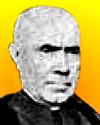
Died 10 Jan 1864 at age 64 (born 22 Dec 1799).
Irish physicist who pioneered in electrical science. He invented the induction coil (1836) before that of better-known Heinrich Ruhmkorff. Callan's coil was built using a horseshoe shaped iron bar wound with a secondary coil of thin insulated wire under a separate winding of thick insulated wire as the “primary” coil. Each time a battery's current through the “primary” coil was interrupted, a high voltage current was produced in the electrically separate “secondary” coil. By 1837, Callan used a clock mechanism to rock a wire in and out of a small cup of mercury to interrupt the circuit 20 times/sec on a giant induction machine, producing 15-inch sparks (estimated at 600,000 volts).«
Irish physicist who pioneered in electrical science. He invented the induction coil (1836) before that of better-known Heinrich Ruhmkorff. Callan's coil was built using a horseshoe shaped iron bar wound with a secondary coil of thin insulated wire under a separate winding of thick insulated wire as the “primary” coil. Each time a battery's current through the “primary” coil was interrupted, a high voltage current was produced in the electrically separate “secondary” coil. By 1837, Callan used a clock mechanism to rock a wire in and out of a small cup of mercury to interrupt the circuit 20 times/sec on a giant induction machine, producing 15-inch sparks (estimated at 600,000 volts).«
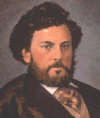
Died 10 Jan 1862 at age 47 (born 19 Jul 1814). quotes
Samuel Colt, born Hartford, Conn., was an American firearms manufacturer who popularized the Colt 45 revolver and other firearms. While an apprentice seaman, he made a wooden model of an automatically revolving breech pistol (perhaps inspired by the ship's wheel) and on returning to the U.S.A. he made metal models, filed for patents, and toured as "Dr. Coult," thus earning the money he needed to begin manufacturing. His factory was one of the most innovative in its use of mass-production technique. His Barnum-like salesmanship and self-promotion also popularized his product.
Samuel Colt, born Hartford, Conn., was an American firearms manufacturer who popularized the Colt 45 revolver and other firearms. While an apprentice seaman, he made a wooden model of an automatically revolving breech pistol (perhaps inspired by the ship's wheel) and on returning to the U.S.A. he made metal models, filed for patents, and toured as "Dr. Coult," thus earning the money he needed to begin manufacturing. His factory was one of the most innovative in its use of mass-production technique. His Barnum-like salesmanship and self-promotion also popularized his product.
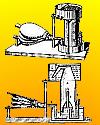
Died 10 Jan 1850 (born 1776).
Irish physician who invented one of the first safety lamps (1813) for use in coal mines. In the late 18th century, the flammable gas methane (firedamp), remained a common hazard of English coal mines. Clanny's first invention - his "bellows lamp" was a tin lantern with glass window, candle and bellows. The flame was separated from the atmosphere by water seals. It required continual pumping for operation, was unwieldy and found no practical application. However, some of its features were incorporated in Sir Humphry Davy's safety lamp (1815), which was the precursor of modern safety lamps. On 16 Oct 1815, Clanny's second lamp, the "blast"-lamp, was tested in a mine, and on 20 Nov 1815, his third lamp, the "steam"-lamp was also tested.
Irish physician who invented one of the first safety lamps (1813) for use in coal mines. In the late 18th century, the flammable gas methane (firedamp), remained a common hazard of English coal mines. Clanny's first invention - his "bellows lamp" was a tin lantern with glass window, candle and bellows. The flame was separated from the atmosphere by water seals. It required continual pumping for operation, was unwieldy and found no practical application. However, some of its features were incorporated in Sir Humphry Davy's safety lamp (1815), which was the precursor of modern safety lamps. On 16 Oct 1815, Clanny's second lamp, the "blast"-lamp, was tested in a mine, and on 20 Nov 1815, his third lamp, the "steam"-lamp was also tested.

Died 10 Jan 1785 at age 55 (born 13 May 1729).
German-American who emigrated to Philadelphia in 1750, and established iron forges in Lancaster and Berks Counties, Pennsylvania. Profits from the business enabled him in 1762 to buy huge amounts of land, on which he designed and built the town of Manheim in Lancaster County. Two years later he began work on a glass factory, having already made plate glass at one of the iron forges. He imported glassblowers from Venice, England, and Germany to produce glass tableware. Though none of the pieces was signed, his use of color, including high-quality blue, green, and purple, became his signature, and he also produced crystal-clear glassware.
German-American who emigrated to Philadelphia in 1750, and established iron forges in Lancaster and Berks Counties, Pennsylvania. Profits from the business enabled him in 1762 to buy huge amounts of land, on which he designed and built the town of Manheim in Lancaster County. Two years later he began work on a glass factory, having already made plate glass at one of the iron forges. He imported glassblowers from Venice, England, and Germany to produce glass tableware. Though none of the pieces was signed, his use of color, including high-quality blue, green, and purple, became his signature, and he also produced crystal-clear glassware.
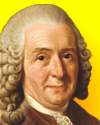
Died 10 Jan 1778 at age 70 (born 23 May 1707). quotes
Carolus (Carl) Linnaeus, a.k.a.Carl von Linné was a Swedish botanist and explorer who was the first to establish a precise biological classification, with a uniform system for naming organisms by genera and species of organisms (binomial nomenclature). Thus he can be called the “father of modern taxonomy.” He associated whales as mammals, but did not group man with the apes. Later, others improved his scheme by adopting more natural, developmental distinctions between species. He travelled widely to build his collection of plant specimens. He recognised balance and competition in nature relating to insects, animals and plants. After being made a Swedish noble (1761), he took the name Carl von Linné. more
Carolus (Carl) Linnaeus, a.k.a.Carl von Linné was a Swedish botanist and explorer who was the first to establish a precise biological classification, with a uniform system for naming organisms by genera and species of organisms (binomial nomenclature). Thus he can be called the “father of modern taxonomy.” He associated whales as mammals, but did not group man with the apes. Later, others improved his scheme by adopting more natural, developmental distinctions between species. He travelled widely to build his collection of plant specimens. He recognised balance and competition in nature relating to insects, animals and plants. After being made a Swedish noble (1761), he took the name Carl von Linné. more

Paul Muni as Drummond (Darrow)
In 1955, the play Inherit the Wind opened on Broadway at the National Theater. Its plot was loosely based on the Scopes Monkey Trial, that began a generation earlier, on 10 Jul 1925. The playwrights Jerome Lawrence and Robert E. Lee did not write it be a historically accurate presentation, but to dramatize the climate of anxiety and anti-intellectualism resulting from the anti-communist hysteria of the McCarthy era. Character names were changed, fictional ones added, and plot was written for dramatic effect. It was critically well-received. When made into a movie in 1960 by Stanley Kramer, the trial's circus atmosphere was highlighted. A made-for-TV rewrite of the movie was broadcast by NBC in 1988.«
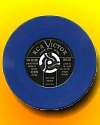
In 1949, RCA introduced the “single,” the 7-inch diameter 45 rpm record in the U.S. A single could play eight minutes of sound per side. Columbia had introduced the 12" long-playing vinyl 33 rpm as a new format the previous year. These formats greatly improved upon the 78 rpm records, which were limited to only 5 minutes per side on a 12" disk. Vinyl records were less fragile, and had a lower level of surface noise, but needed new playing equipment. RCA subsequently manufactured a record-player with a wide-diameter spindle to automatically play a stack of singles. The 45 rpm 7" record was favoured by the young, and became successful with the onset of rock and roll. In the UK sales of 45s overtook 78s early in 1958.«
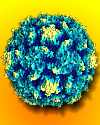
In 1947, Stanford University reported the isolation of the polio virus, after three years of research funded by the National Foundation for Infantile Paralysis. The work was done by Drs Hubert S. Loring and C.E. Schwerdt of the Stanford Dept. of Chemistry. Laboratory tests and photographs showed it to be at least 80% pure, and that it could lead to producing an impurity-free vaccine for use against infantile paralysis. Other vaccines existing at the time had problems with large amounts of impurities. The virus was obtained by purification from ground-up brain and spinal cord of rats infected with the polio virus. Electron microscope photographs showed the virus as a spherical partical about 25 nanometers across.«[Image: polio virus, type 1.]
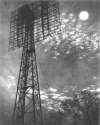
In 1946, the U.S. Army Project Diana team detected radar signals reflected off the moon's surface. A 180 cycle wave pulse with a 1/4 sec duration was beamed by the Army Signal Corps from the Evans Signal Laboratories, Belmar, N.J. The echo was received 2.4 sec. later, proving that radio waves could penetrate Earth's atmosphere. The experiment was supervised by Lt. Col. John H. De Witt, the broadcasting pioneer and amateur astronomer who first came up with the idea in 1940. His early amateur attempts were unsuccessful, but his chance came a few years later, after WW II, courtesy of the U.S. Army, at the Signal Corps Laboratories. During the war, he had developed radar for locating mortars and directing counterfire.«[Image: A wartime SCR-271 bedspring radar antenna, greatly modified for use in the experiment.]
In 1944, the first mobile electric power plant in the U.S., built into six specially designed railway cars, was delivered by the General Electric Company to the U.S. Navy Bureau of Yards and Docks, Navy Yard, Philadelphia, Pa. The railway cars carried oil-fired boilers to provide steam to drive the turbines of the generating plant, together with switchgear equipment and transformers. A locomotive could move the cars to the chosen destination site, travelling at up to 40 mph. On arrival, in less than 24 hours, the power plant could be put in operation, able to generate 10,000 kW of electrical power.«
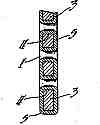
(USPTO)
In 1922, Thomas A. Edison was issued a U.S. patent for a “Storage-Battery Electrode and the Production of Same” (No. 1402751). The electrodes were intended for batteries of the Edison type using nickel hydroxide for the active material for the positive elements and electrolytically active iron as the active material for the negative elements in an alkaline solution. The improved electrode element was designed to provide a high discharge rate by decreasing the internal resistance of the cell. The electrode element consisted of a thin metallic plate with small and closely adjacent perforations. The metal surface had a thin coating or film of a hydroxide of a suitable metal (preferable nickel) applied by electrolytic deposition.«[Image: one of the patent diagrams showing a fragmental sectional view of the electrode element.]
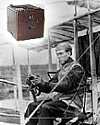
In 1911, the first photograph to be taken in the U.S. from an airplane was made. The photographer was Major H.A. "Jimmie" Erickson while flying in a Curtiss biplane piloted by Charles Hamilton over San Diego, California.[Image: a different pilot and Curtiss Pusher aircraft showing the flyer's conditions in 1911. Inset: a typical box camera of the era, a Kodak No.2 Bullseye.]
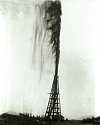
In 1901, the first major discovery of oil in Texas was made at Spindletop, near Beaumont. Since 1892, there had been exploration in this upper Gulf Coast area of the state. Capt. Anthony F. Lucas, a Louisiana mining engineer and oil prospector, had drilled several dry holes, but he found a gusher in the Spindletop field - called the Lucas No. 1 - which sprayed oil over 100 feet into the air until it was capped nine days later. Its initial production of an estimated over 75,000 barrels of oil a day peaked with an annual production of 17.5 million barrels. A flood of speculation in the area resulted, as others made significant discoveries, bringing a boom for workers, suppliers and manufacturing in refineries, pipelines and oil-field equipment.«
Giant Under the Hill: A History of the Spindletop Oil Discovery..., by Jo Ann Stiles, et al. - book suggestion.
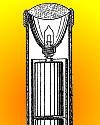
(USPTO)
In 1899, a U.S. patent was issued for an "Electric Device," invented by David Misell, which was manufactured as the first tubular "Flash Light" by Conrad Hubert at his American Electrical Novelty and Manufacturing Company (No. 617,592). The limited power of the batteries of the era could only power the inefficient carbon-filament miniature light bulb for brief periods of time between periods of recovery time. As batteries improved, it remained known as a "flashlight" in the U.S., but known as a torch in Britain. Misell was British, but lived in Manhattan, N.Y. at the time of the patent. His design had a tubular case, lens over a reflector and bulb at one end, an switch for intermittent use, used cylindrical batteries contained end-to-end in the now familiar manner, and a removable cap at the other end to insert them.[Image: Detail of head of the flashlight from cross-section patent drawing.]
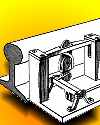
(USPTO)
In 1888, a U.S. patent was issued for the railway signal to the Black American inventor, A.B. Blackburn (No. 376,362). The type of signal was that designed to be operated by the wheels of a train. A lever was depressed as a train wheel travelled over it, to remotely operate an alert through a mechanical linkage upon the passing of the train. It was designed for use upon a single track railway line for trains passing in one direction. To provide a signal for trains passing in the opposite direction, a similar apparatus would be applied on the opposite rail. This patent was an improvement in mechanical design of his earlier patent No. 309,517 on 23 Dec 1884, in which he also described how a gong was activated to provide the alert.«[Image: detail from patent diagram showinf device beside a section of rail.]
The Inventive Spirit of African Americans: Patented Ingenuity, by Patricia Carter Sluby. - book suggestion.
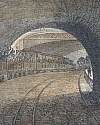
In 1863, London's Metropolitan, the world's first underground passenger railway, opened to fare-paying passengers. The four mile, 33-min route had seven stations between Farringdon St. and Paddington. At 6 am, six steam locomotives each with four carriages, left 15-min apart, and made a total of 120 journeys in both directions, carrying over 30,000 passengers. Charles Pearson first proposed the underground railway to relieve congestion in London. The Metropolitan Railway Co. was founded in Aug 1854. After financial delays, the first shaft was sunk at Euston Square, in 1860. The tunnel was built by “cut-and-cover” whereby a trench following the route was dug to the rail level, then covered with beams and a new surface.«[A trial run with invited passengers took place on the previous day, 9 Jan 1863, carrying them to an inaugural banquet at the Farrington St. terminus.]
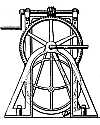
(USPTO)
In 1855, English inventor, Henry Bessemer took out a British patent for his "decarbonization process, utilizing a blast of air" that revolutionised steel manufacturing (No. 66/1855). Scientific American (14 Dec 1872) said this patent was "one of the most lucrative" recorded. On 11 Nov 1856, Bessemer was issued US Patent No. 16,082 for his steel-making process. However, shortly thereafter a dispute gave priority to the American William Kelly, who though filing after Bessemer, was recognized as the first to actually use a blast of air into molten pig iron to make steel. Nevertheless, Bessemer benefitted from his patent on the tilting converter in which he processed the iron and then could pour out the molten steel.«[Image: Figure from Bessemer's U.S. patent No. 16,082 showing end elevation of the tilting mechanism. The circular end of the refining chamber is seen in the lower half of the diagram.] more
Sir Henry Bessemer: An Autobiography, by Henry Bessemer. - book suggestion.
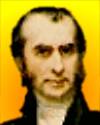
In 1832, Thomas Hodgkin, age 34, took a paper to the Medical and Surgical Society in London. Since he wasn't a member, the Society's secretary had to read it for him. Only eight members were present. The title was Some Morbid Appearances of the Absorbent Glands and Spleen. It was mostly ignored; only late in that century was this rare lymphatic disease named Hodkin's disease in England, long after the Germans had started calling it Hodgkin's Krankheit. Although Marcello Malpighi had written about the disease in 1666, Hodgkin's paper was the first to well document the disease. (With present knowledge, of the seven cases Hodgkin described, only three were legitimate examples; four cases were other illnesses that mimic Hodgkin's disease.)
more
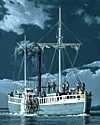
In 1812, the New Orleans, the first steamboat to sail down the Mississippi, arrived in New Orleans, La. It had left Pittsburgh, Pa., on 20 Oct 1811. The 138-ft ship had a 30-ft beam and was propelled by a stern-wheel, assisted at times by sails. It was a joint venture with Robert Fulton and Robert Livingston, and cost about $40,000, including the engines. Owner Nicholas J. Roosevelt and his wife were the only passengers with a crew of sailors, domestics and a dog. Travelling at about 10 mph, it reached Louisville, Ky. after four days. It could not cross the shallow Ohio River Falls there, so it spent 3 weeks making several trips between Louisville and upriver to Cincinnati until Nov, when with deeper water, it was just able to cross the rapids. In mid Dec, it saw effects of the distant New Madrid earthquake.«[An account by J.H.B Latrobe (1871) gives a departure date of Sep 1811. This and other inaccuracies were specified in Charles W. Dahlinger, 'Nicholas Roosevelt's 1811 Steamboat New Orleans, Pittsburgh Legal Journal (21 Oct 1911), Vol. 59, No. 42, 570-591. Other accounts also differ.]

In 1696, Thomas Savery was issued British Letters Patent No.347 for his invention for "Navigation improved; or the art of rowing ships of all rates in calms with a more easy, swift, and steady motion than oars can." He went on to invent the first use of steam power and on 25 Jul 1698, he received Letters Patent No. 356 for what he called "The Miner's Friend; or an engine to raise water by fire" which was the first application of steam power for pumping water.«*




